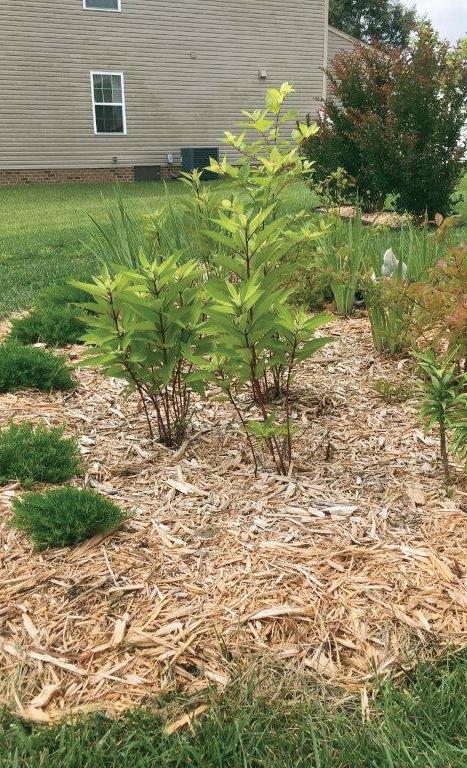
4 minute read
Managing Turfgrass for a Healthy Chesapeake Bay, Rivers and Streams
By Joe Wood, Ph. D.
Whether it’s fishing for brook trout in Blue Ridge streams, paddling the James River near Richmond, or enjoying local oysters on the Eastern Shore, we all benefit from clean waterways in Virginia. Likewise, how turfgrass is managed is essential to the health of local streams, rivers and waters downstream in the Chesapeake Bay. In developed parts of Virginia, turfgrass is among the most common land covers. That’s why using sustainable practices on turfgrass is critical to not only ensuring beautiful green spaces, but also protecting our valuable waterways.
Advertisement
The key lies in addressing polluted runoff—one of the biggest threats to clean water in Virginia. It occurs when heavy rains wash a mix of chemicals, sediment, and excess nutrients, and other pollution off buildings, streets, parking lots, and even lawns and golf courses. This pollution contributes to murky waters, algal blooms, lowoxygen dead zones, and a host of other problems in our rivers and the Chesapeake Bay.
Two ways to minimize polluted runoff are through proper nutrient management for turfgrass and conservationminded landscaping. Notably, bare cover is especially bad for clean water. Sustainably-managed turfgrass is one way to avoid damage caused by runoff from muddy exposed soil.

Aerial View of Chesapeake Bay
Photo Courtesy of CBF – Bill Portlock
The turfgrass industry is an important partner in the Chesapeake Clean Water Blueprint—the multistate effort to clean up waters across the six-state Bay watershed. State and local governments have committed to achieve specific, measurable pollution reductions under the Blueprint. The states agreed to have the 60 percent of the needed programs and practices in place by 2017, and to complete the job by 2025. The Blueprint calls on everyone to do their part, including farmers, cities and towns, wastewater treatment plants, and of course turfgrass professionals.
The turfgrass industry has specifically helped accomplish significant goals under the Blueprint, including supporting legislation that prohibits phosphorous in lawn maintenance fertilizer without soil tests, establishing nutrient management plans on golf courses across the state, and increasing nutrient management in urban areas.

Sustainable practices in managed turf and landscape areas in the Bay watershed are essential to Bay health.
After years of work we are beginning to see noteworthy progress for clean water, from record coverage of underwater grasses, more dissolved oxygen in waterways, and a burgeoning oyster aquaculture industry in Virginia. However, the Bay watershed is still a system in recovery, and without a sustained and coordinated long-term effort this progress could be reversed.
What’s the current state of the Chesapeake Bay and the many tributaries in its watershed? Since 1998, the Chesapeake Bay Foundation (CBF) has tracked the Bay’s health in its State of the Bay report. CBF scientists compile and examine the best available data and information for 13 indicators in three categories: pollution, habitat, and fisheries. CBF scientists assign each indicator an index score from 1 to 100. Taken together, these indicators offer an overall assessment of Bay health.
This year’s State of the Bay Report score decreased one point to 33, equivalent to a D+. After years of progress, the drop was largely due to increased pollution and poor water clarity caused by record regional rainfall in 2018 that led to more polluted runoff.
“The good news is that scientists are pointing to evidence of the Bay’s increased resiliency and ability to withstand, and recover from, these severe weather events. And this resiliency is a direct result of the pollution reductions achieved to date. In addition, we did see increases in scores for dissolved oxygen and Bay grasses since 2016, but the recovery is still fragile,” said Beth McGee, CBF’s Director of Science and Agricultural Policy.
Two of the 13 indicators, dissolved oxygen and Bay grasses, improved. In the pollution category, toxics were unchanged, while water clarity, and nitrogen and phosphorus pollution were worse. In the habitat category, scores for Bay grasses and resource lands improved, and buffers and wetlands remained the same. In the fisheries category, scores for oysters, crabs, and rockfish remained the same, while the score for shad declined.
This year’s score is still far short of the goal to reach 40 by 2025 and ultimately a 70, which would represent a saved Bay. The unspoiled Bay ecosystem described by Captain John Smith in the 1600s, with its extensive forests and wetlands, clear water, abundant fish and oysters, and lush growths of submerged vegetation, serves as the theoretical benchmark and would rate a 100 on CBF’s scale.
Continued cooperation from all of the Bay restoration partners, including the turfgrass industry, is essential to a lasting win. “The Blueprint is a road map to a restored Bay. If the states and EPA do their part, we can succeed in achieving the greatest environmental success the world has ever seen,” said CBF President William C. Baker.









